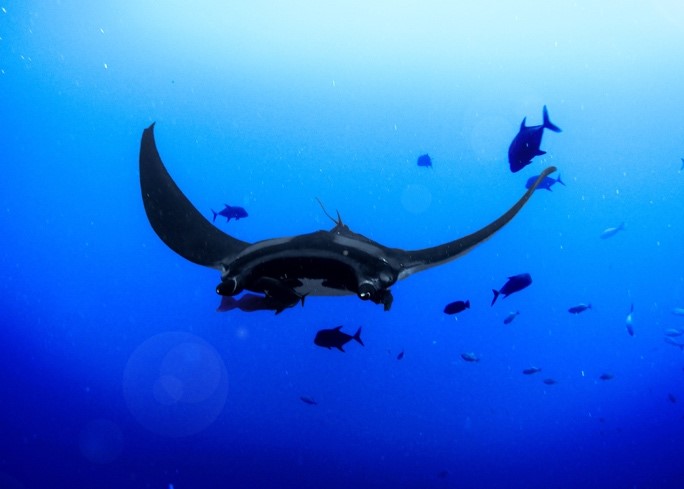Animals are disappearing from tropical oceans at alarming rates. Patterns in the fossil record suggest the declines are not purely the fault of human activity, but will worsen nonetheless if we do not limit global warming, an international team of researchers including UConn scientists report in the May 25 issue of PNAS.
The researchers used fossil records to reconstruct global oceanic biodiversity patterns from the last ice age (around 20,000 years ago) and the pre-industrial period before the 1800s. They used these two data sets to build ecological models for projecting what global marine biodiversity might be like seventy years from now in the 2090s.
Foraminifera are a diverse group of tiny animals that float through the oceans. They are exceptionally well-preserved in marine sediments because they have hard shells. Different species are found in different environments, which allow this group of single-celled organisms to serve as sensors for climate change in the ocean.
“We know from geologic records and climate simulations that tropical sea surface temperatures warmed substantially from the last glacial maximum to present-day, and will continue to do so into the future. We wanted to know what are the potential impacts of this warming on pelagic ecosystems,” says Ran Feng, a paleoclimatologist and assistant professor in the Department of Geosciences at UConn. Pelagic ecosystems are the fish-filled upper layers of the ocean, where foraminifera also live.
Using fossil foraminifera as a “window” to see into past pelagic ecosystems through their rich fossil records, the authors discovered an equatorial dip in diversity during the pre-industrial period as well as in the model’s projections for the end of this century, but not during the last ice age.
“Biodiversity is usually high in the tropics and low at the poles. We call this important pattern the ‘latitudinal diversity gradient.’ Yet, recent studies have found that global marine biodiversity patters often show an equatorial ‘dip’ of diversity. We wanted to explore what caused this, and whether it was a recent pattern,” says lead author Moriaki Yasuhara, a macro- and paleo-ecologist at the University of Hong Kong.
The modern decline of tropical diversity likely started during the warming after the most recent ice age, around 15,000 years ago. However, the magnitude of decline is projected to be amplified by human activities that enhance global warming. By the end of the 21st century, tropical diversity may decrease to levels not seen for millions of years if societies keep burning fossil fuels at current rates.
“Our work provides a means to mechanistically study the linkage between biodiversity and climate in the context of Earth’s history. We are expecting more exciting results using this interdisciplinary approach,” says Ran Feng, who is currently leading the climate modeling effort for an ongoing NSF project to study the effect of plate tectonics and climate change on Miocene mammal diversity across the western U.S.



